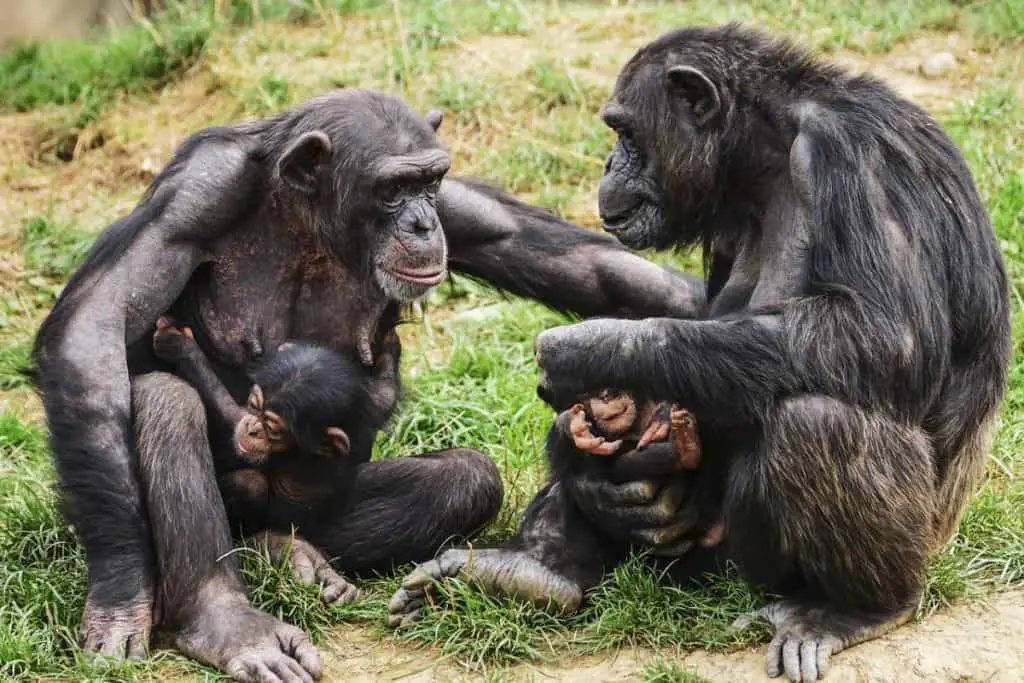
Learn more about how the group uses Science & Technology for Conservation.
#Monkey vs chimpanzee archive
Get to know Koko when you check out the KokoFlix Videoblog Archive online. Do you know Koko? Koko is one of the most famous and photogenic gorillas you're likely to meet.How did you score? Did you do as well on the quiz as you thought you would? What new facts did you learn? Jump online and take the Amazing Animals: Primate Quiz. Think you know a lot about primates? Put yourself to the test.Like humans, apes can think and solve problems in their environments.ĭid you go ape over today's Wonder of the Day? Don't forget to check out the following activities with a friend or family member: Communication skills help gorillas, chimps, and bonobos develop complex social groups and even exhibit some aspects of culture. They can't speak like humans, but they can use sign language and other bodily movements to communicate with humans effectively. For example, chimpanzees, which are closest to humans genetically, can create simple tools and use them effectively.Īlthough monkeys communicate with each other, apes possess more advanced cognitive and language skills. In addition to having similar basic body structures, apes are highly intelligent and can exhibit human-like behavior. In evolutionary and genetic terms, ape species are much closer to humans than monkeys are. Ape species include humans, gorillas, chimpanzees, orangutans, gibbons, and bonobos. Monkey species include baboons, macaques, marmosets, tamarins, and capuchins. When moving through trees, monkeys run along branches, whereas apes swing from branch to branch using their arms (this is called brachiating). Monkeys tend to have similar skeletal structures like that of smaller, four-legged mammals, such as cats and dogs. Apes also tend to live longer than monkeys. Apes tend to be larger than monkeys and usually have larger brains. Apes do not have tails, while most monkey species do. The quickest and easiest way to tell monkeys and apes apart is by looking for a tail. Most of the differences can be described in terms of physical characteristics and evolutionary development over time. Given that lemurs and humans are both primates, for example, you can see that there are significant differences between the many different types of primates. Except for humans, most primates are agile tree-dwellers.

Primates are distinguished by having hands, handlike feet, and forward-facing eyes. There are more than 300 species of primates on Earth, including human beings and other apes, monkeys, and prosimians, such as lemurs.

There are definite differences between the two, though.īefore looking at differences, it's important to know that apes and monkeys are both primates. In fact, many people today will refer to apes as monkeys and vice versa. Who were these creatures eating bananas? Were they monkeys? Could they have been apes? Or were they both? Exactly what is the difference between apes and monkeys anyway?įor much of history, people have used the terms "monkey" and "ape" interchangeably. We tried to get a closer look at them, but we slipped on a banana peel and…well…we don't remember much after that!

Monkey: No way! You know I go ape for bananas!Īpe: Here's the last one. We were wandering through the heart of the Wonderopolis jungle the other day when we overheard an interesting conversation between a couple of hairy creatures:Īpe: Don't you think you've had enough already?


 0 kommentar(er)
0 kommentar(er)
